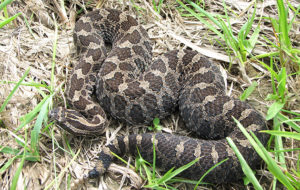
For wild animals, life is all about survival. And most don’t have the luxury of cheetah-fast speed or shark-like strength.
But nature has equipped a select group with an unusually powerful weapon — venom.
While venom is most often associated with creepy, crawly creatures like scorpions, snakes and spiders, this naturally occurring biological weapon is used by an extremely diverse set of species across the animal kingdom. From caterpillars to cone snails to short-tailed shrews, venom serves as a quick, efficient way to subdue prey, as well as a potent defense tactic.
Venom can paralyze the respiratory system, destroy muscle tissue and prevent blood from clotting, among other physiological effects achieved through entering the victim’s bloodstream. On a genetic level, venom is a diverse and sophisticated cocktail of protein-based toxins that has captured the fascination of many scientists for its potential in medicinal drug development and its unique evolutionary history.
Comments are closed